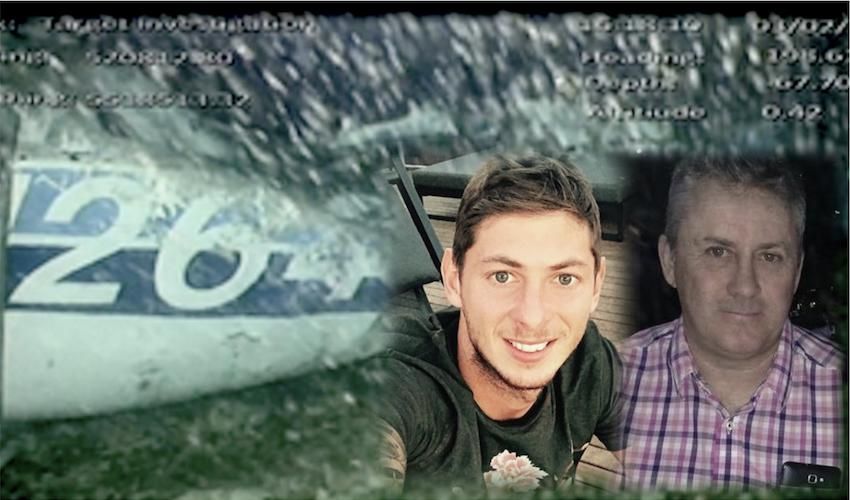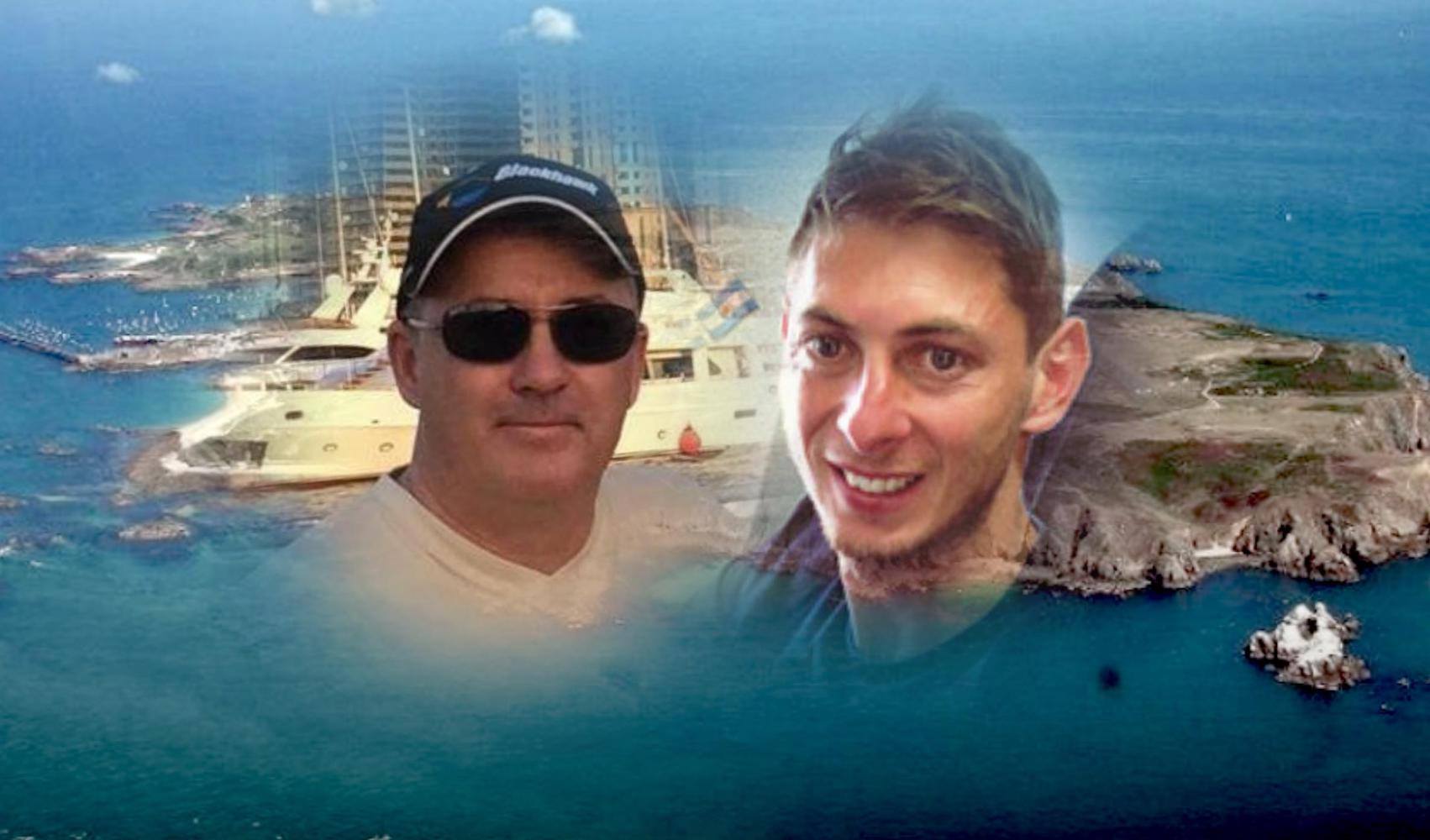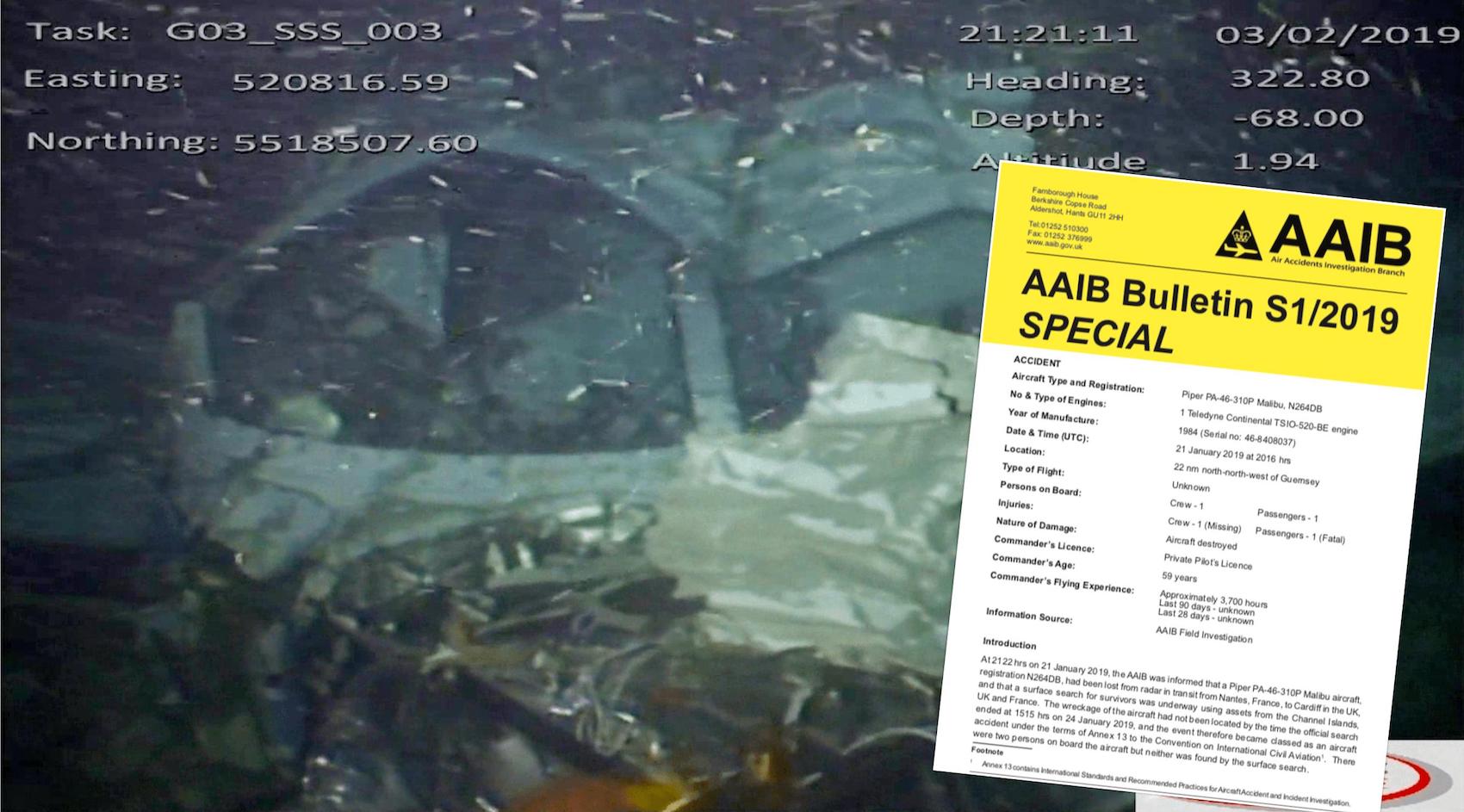


The Air Accident Investigation Branch has suggested it is unlikely the plane which crashed with pilot David Ibbotson and footballer Emiliano Sala on board, will be recovered from its resting place at the bottom of the English Channel.
In a statement released alongside an interim Special Report into the enquiry yesterday, the AAIB said recovering the wreckage of the plane will 'not add significantly to the investigation' into the death of footballer Mr Sala, and the disappearance of Mr Ibbotson.
Mr Ibbotson hasn't been seen since the Piper Malibu he was flying crashed into the Channel in January. The Argentine striker's body was discovered inside the stricken plane when it was found on the sea bed but Mr Ibbotson's family have not yet had any closure as the search for their husband and father found no clues to his whereabouts.

Pictured: David Ibbotson and Emiliano Sala were flying from Nantes in France to Cardiff in Wales, as part of Mr Sala's football transfer, when the plane ditched into the Channel as it passed Les Casquets off Alderney. Mr Sala's body was found inside the stricken plane on the sea bed but no trace has been found of Mr Ibbotson.
Yesterday, the AAIB released an interim report into the investigation into the accident, revealing that a post mortem test result on Mr Sala's body had found high levels of Carbon Monoxide. As it is likely Mr Ibbotson was also exposed to CO that is now considered the likely cause of the accident.
The report says, 'it is clear from the symptoms that exposure to CO can reduce or inhibit a pilot’s ability to fly an aircraft depending on the level of that exposure'.

Acknowledging the ongoing calls to recover the wreckage of the Piper Malibu, the AAIB released another statement 'in response to call to recover aircraft wreckage N264DB'.
It said both the Sala and Ibbotson families have been kept up to date on the progress of the investigation and the reasons surrounding the decision to so far not recover the plane.
The AAIB had worked alongside 'wreck expert' David Mearns to find the plane earlier this year and said that had provided 'substantial' evidence to help the ongoing enquiry.
“In February our underwater search operation successfully located the wreckage, recovered the passenger’s body and captured substantial video evidence from the scene using a remotely operated vehicle. It was not possible at the time to recover the wreckage.
"We have carefully considered the feasibility and merits of returning to attempt to recover the wreckage. In this case, we consider that it will not add significantly to the investigation and we will identify the correct safety issues through other means.
"In making our decision, we took into account the high cost of underwater recovery, the evidence we collected in February and the risk that, after a violent impact with the sea, the wreckage would not yield definitive evidence.”

Pictured: The wreckage of the plane was found on the sea bed in February and looks likely to remain there.
The investigation into the accident is ongoing and is unlikely to be concluded this year. The AAIB has said a final report will be issued once that happens.
Pictured top: Emiliano Sala and David Ibbotson.
Comments
Comments on this story express the views of the commentator only, not Bailiwick Publishing. We are unable to guarantee the accuracy of any of those comments.